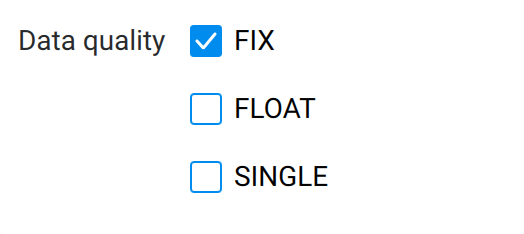Hello.
I did some tests over the weekend with “PPK” and “Stop and Go”.
I need to know if I understand correctly each method:
The PPK will record points per second of time as configured (1Hz, 5Hz or 10Hz), correct?
Each PPK record will be processed in Emlid Studio and a vector is created, correct?
Is it like an RTK, with a single observation, but post-processed?
What about Stop and Go?
It also records as per recording time while walking.
In Emlid Studio, the CSV of the RTK is linked and the occupancy points are identified, correct?
In this case, processing is carried out and numerous observations regarding the point are considered and then an average is made, correct?
How is this average made?
Which observations go into calculating the mean? Is there any parameter that “chooses” which observations to average? For example a scattering radius?
Is it like averaging all recorded observations within a tolerance radius?
Is CSV only used to get the antenna height? Or does it influence something else in the processing?
The only difference between Stop and Go and Fast Static is whether or not to keep GNSS writing logs?
1 Like
Hi Mauricio,
You’ve pretty much summed up Kinematic processing: you get single observation points collected at regular intervals. The accurate coordinates are calculated during post-processing.
As for Stop&Go, you’re right that it averages the solutions. But the solutions used by Emlid Studio depend not on the radius but on the point’s time span from a CSV file. Tapping the Data quality check marks, you can also choose which solutions are included.
I’d say Stop&Go is a semi-kinematic technique because you can collect several points one by one. As you noticed, the receiver still records data when you move from one point to another. This part will just be omitted in the calculations.
1 Like
Right.
So if I record a point in RV3, that record will be used to define a time lapse to identify the static point.
What is this time?
If I stay on point for 5 minutes, or if I stay on point for 60 minutes, will there be differences?
And does the point solution in RV3 influence this determination?
Does it make a difference if I collect Fixed, Floating or Autonomous point for this determination of the time interval that will be used to determine static observations of that point?
Hi Mauricio,
Stop & Go in Emlid Studio uses in calculations only raw data logs and the time of point collection. Because of it, the solution status doesn’t influence the result. What really affects it is the satellite visibly of the receiver. To get better results, ensure your unit has a clear sky view.
Regarding the time, longer observations can slightly improve the results as more data is used in calculations. However, collecting points for 30-40 seconds is usually enough.
Good Morning.
I understood.
But, thinking here with my buttons…
How does Emlid Studio understand which record is part of the static point and which is moving to make the correction?
Another question:
I hear several colleagues saying that if the situation is bad for the RTK, it will also be bad for the “post processed”.
I don’t agree with this statement as RTK is doing correction with instant reads of individual information while static is reading multiple registers to get the final position.
So I’d like an idea and a more technical answer on this.
Emlid Studio uses a CSV file with points, which contains time intervals. So software omits the moving parts of the log using time from the CSV.
Regarding the quality of RTK and PPK, PPK is affected only by the quality of the logs. In comparison, RTK is affected by the logs’ quality and the correction transmission stability.
Also, PPK has one more benefit - the possibility of playing with settings. That means you can post-process the log with different settings and choose the most accurate solution. But of course, if the raw data quality is poor, PPK won’t improve the results significantly.
1 Like
I have a couple follow on questions about the time intervals used in Stop&Go *.csv survey file and about @anna.moloko 's comment that the solution status doesn’t influence results.
I recently processed some survey data using Stop & Go for three points. One of the points came back as having a Float solution. When I looked at the *.pos file data recorded during the time interval for this survey location, I noted that out of the 120 data records recorded during this time interval, only the last two records had a float solution. The rest of the points had a flag indicating a Fixed solution. Yet the point was classed as being a float in the corrected output file. Do 100% of the points being averaged for the time interval have to be a fixed solution for the points found in the corrected *.csv output to be classed as a Fixed solution?
Can I simply just edit the time interval in the *.csv file to leave out the records with a float solution? Or is there some other trick to excluding those last two records?
2 Likes
Hi Peter,
You can check Fix data quality, and then Emlid Studio will calculate the final solution from fix solutions only.

2 Likes
Can I process Stop and Go from other non-Emlid GNSS in Emlid Studio?
To process data in Stop&Go in Emlid Studio, you need to use a CSV file collected in ReachView 3. Since ReachView 3 works only for Reach devices, you can use only our devices as rovers. However, usage of a 3rd-party GNSS receiver as a base station is possible if it collects data in the RINEX format.
A post was split to a new topic: Using Stop & Go with Emlid Flow




